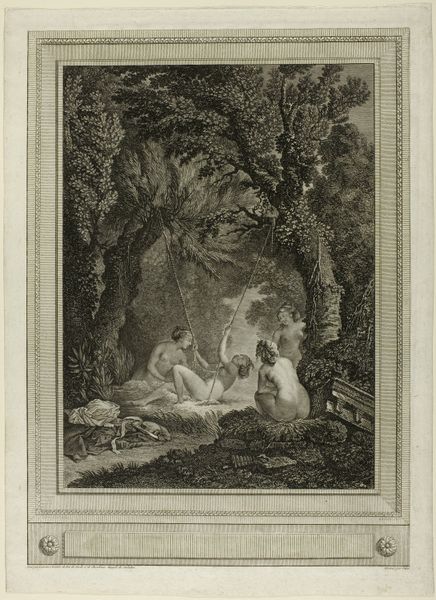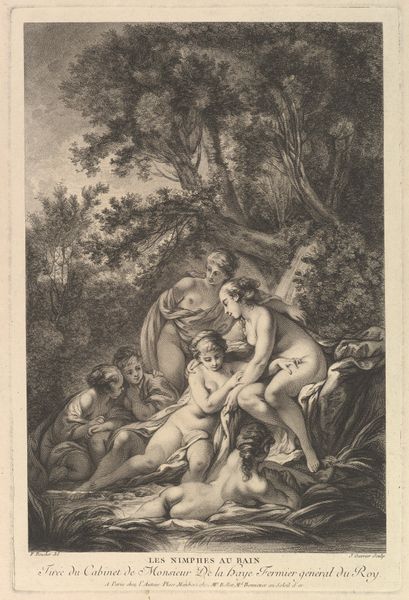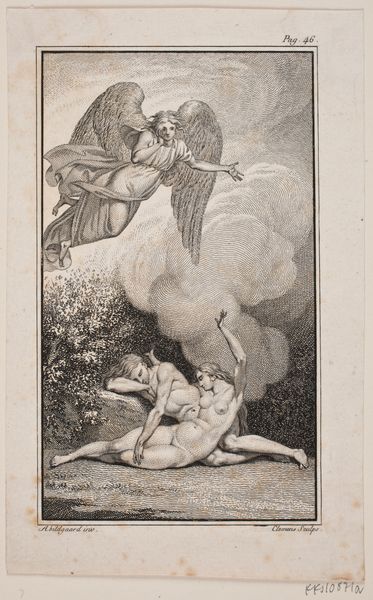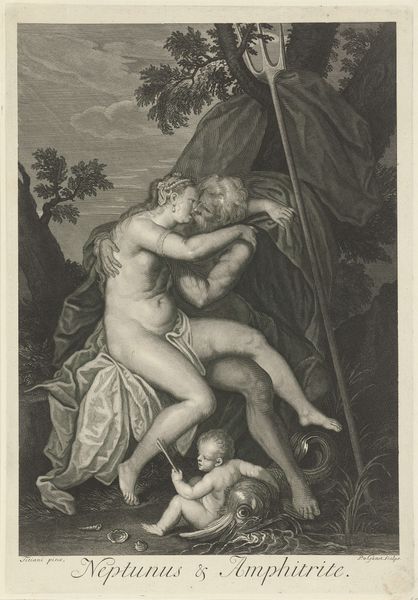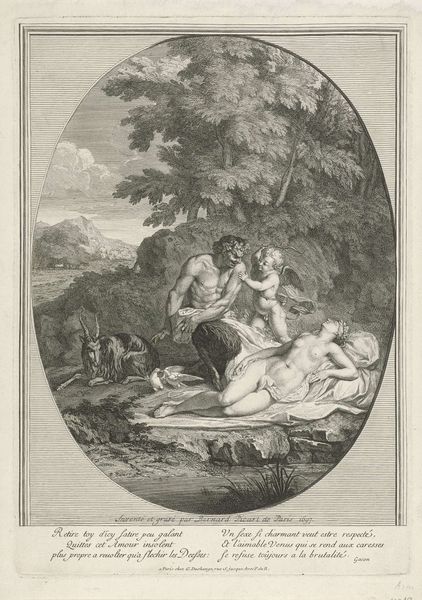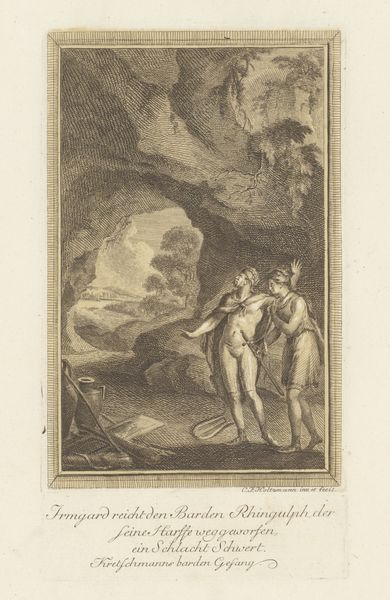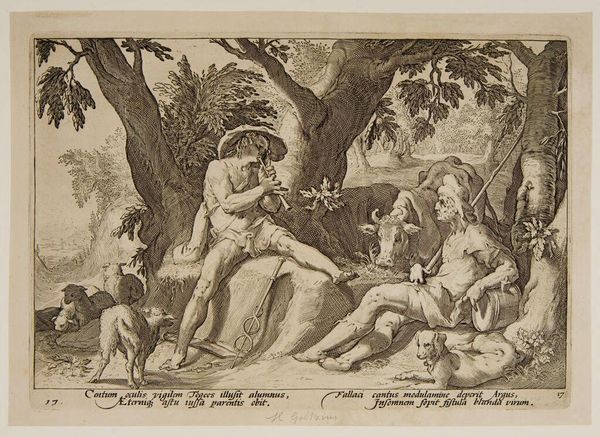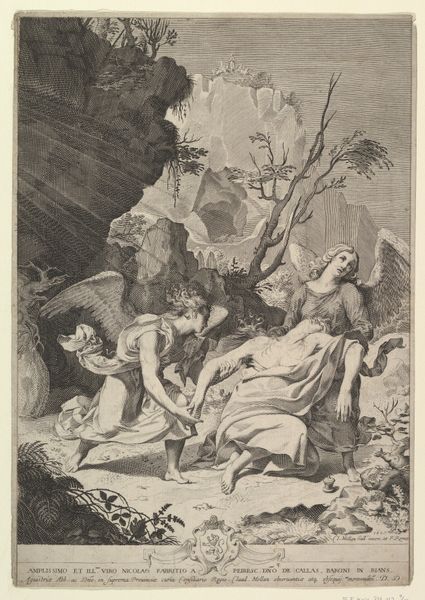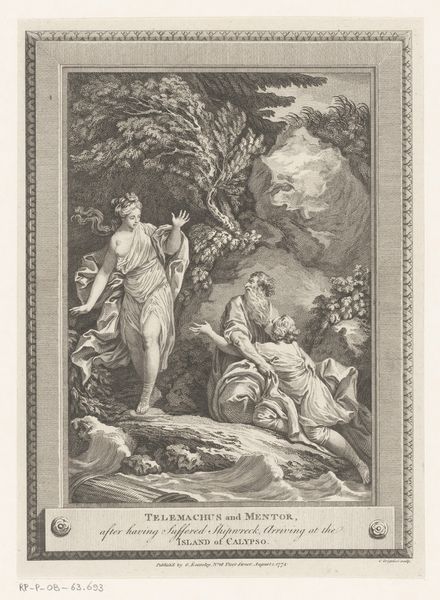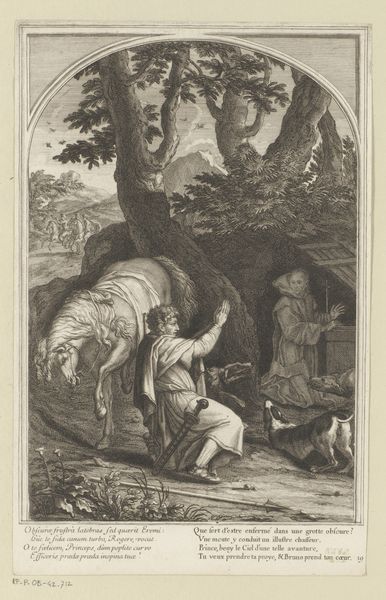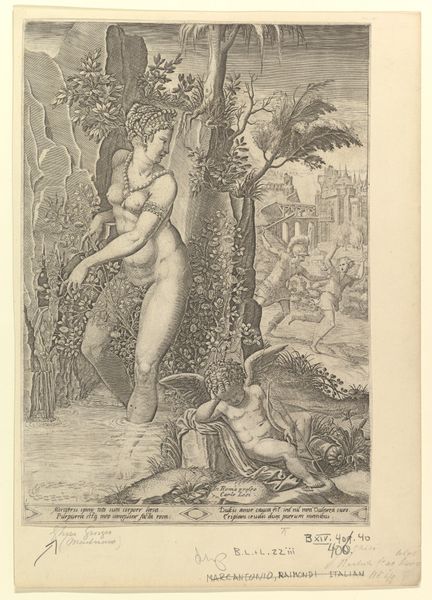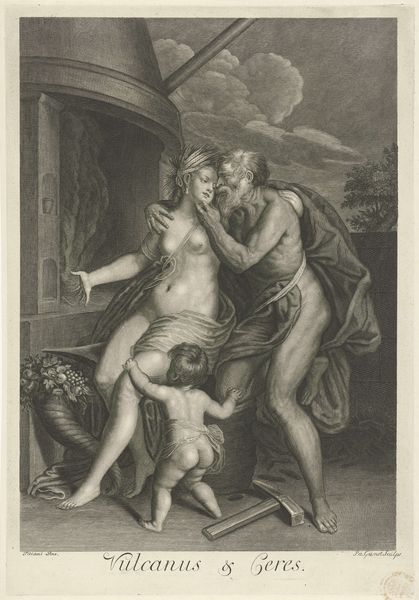
drawing, print, etching, paper
#
drawing
#
allegory
# print
#
etching
#
landscape
#
figuration
#
paper
#
charcoal art
#
line
#
nude
Dimensions: 377 × 266 mm (image); 387 × 277 mm (primary and secondary supports)
Copyright: Public Domain
Curator: Let's take a moment to examine "The Scrupulous Nymphs." This etching, precise in its lines and subtle tonal gradations, depicts three nude nymphs adorning a sculpted herm within a dense, stylized landscape. Editor: Immediately, the interplay of light and dark draws me in. It creates a rather unsettling mood, like a secretive rite unfolding in a shadowy corner of a Renaissance garden. The sharp linearity amplifies this dramatic tension. Curator: Absolutely. The print utilizes line not only to describe form but also to build up textures—the foliage, for example, achieves its density through very delicate cross-hatching. Furthermore, observe how the nymph figures echo the sinuous lines of the trees around them. Editor: It feels like an idyllic allegory playing out against a backdrop of broader artistic currents of its era. Representations of nudes in nature were hardly unusual, of course, but the formal classicism contrasts with the setting. What could this work mean? Curator: One might read the nymphs as embodiments of grace and virtue, actively "scrubbing" clean perhaps, and the herm might symbolize an antique legacy and classical ideals; but that interpretation must extend beyond subject matter. We are meant to be mindful of the artist’s decisions: note the meticulous use of line weight to delineate depth and volume. It contributes a profound clarity. Editor: What’s fascinating is the historical layering present here. Consider what a figure in the world had access to at this period, and the statement of it is to embrace new styles in one's own cultural lens. We view art and society changing together and apart and, in cases like this, meeting one another with an introduction. The scene, with its self-conscious arrangement of figures, evokes the tension that society at large held in regard to historical interpretation. Curator: Indeed. It prompts us to consider the artist’s position within a lineage of image-making and how choices made in composition contribute to its lasting interest. Editor: Considering the artist’s environment, it's difficult not to interpret such stylized art apart from what art's role was becoming—didactic in social spheres but more liberated by private commissions. These considerations highlight the ongoing conversations art has with cultural ideologies of any era. Curator: Precisely. It allows for layers to unfold through analysis and discussion. Editor: A productive and thought-provoking method, one that allows insight into both our worlds.
Comments
No comments
Be the first to comment and join the conversation on the ultimate creative platform.
